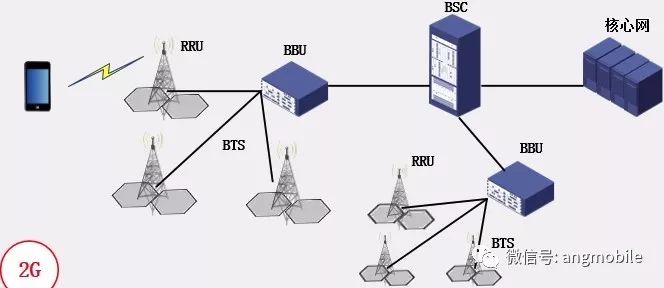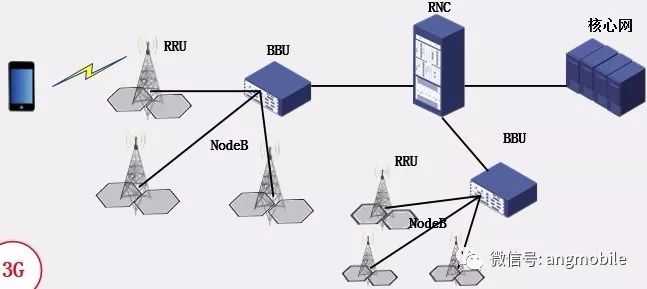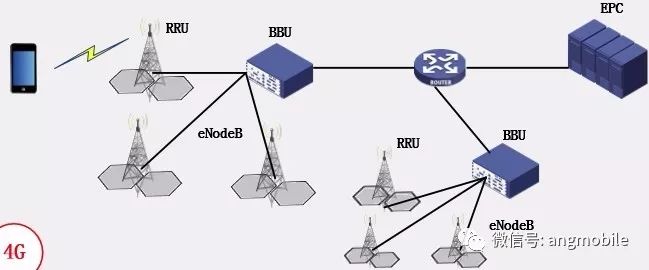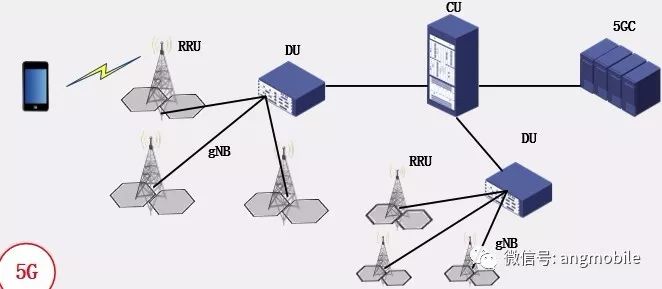Important information
The mobile communication system has gradually developed from the first generation mobile communication system (1G), and has now developed to the fourth generation mobile communication system (4G). The fifth generation mobile communication system (5G) has also begun to standardize and is expected to be commercialized by 2020.
This paper summarizes the base station architecture of 2G, 3G, 4G and 5G systems respectively.
1, 2G
The 2G communication system adopts a 3-level network architecture, namely: BTS-BSC-core network. The 2G core network includes both the CS domain and the PS domain. The 2G communication system initially used an integrated base station architecture. The integrated base station architecture is shown in the figure below. The antenna of the base station is located on the tower, and the rest is located in the equipment room next to the base station. The antenna is connected to the indoor computer room through a feeder. The integrated base station architecture needs to establish a machine room under each tower, which has a long construction cost and a long period, and is not convenient for the expansion of the network architecture.

Later developed into a distributed base station architecture. The distributed base station architecture divides the BTS into RRUs and BBUs. The RRU is mainly responsible for RF-related modules, including four modules: IF module, transceiver module, power amplifier and filtering module. The BBU is mainly responsible for baseband processing and protocol stack processing. The RRU is located on the tower, and the BBU is located in the indoor equipment room. Each BBU can connect multiple (3-4) RRUs. A fiber connection is used between the BBU and the RRU.

2, 3G
In order to save network construction costs when developing 3G networks, the 3G network architecture is basically consistent with 2G. The 3G communication system also adopts a 3-level network architecture, namely NodeB–RNC-core network. The 3G core network includes both the CS domain and the PS domain. The 3G era mainly uses a distributed base station architecture. Similarly, the distributed base station architecture divides the NodeB into two parts, a BBU and an RRU.

3, 4G
When the 4G era arrived, the base station architecture changed a lot. To reduce end-to-end latency, 4G uses a flat network architecture. The original 3-level network architecture is "flattened" to level 2: eNodeB-core network. Part of the RNC's functionality is split into eNodeBs and part of it is moved to the core network. The 4G core network only contains the PS domain. The 5G WeChat public platform (ID: angmobile) learned that the author of this article, Weixingguang, further introduced that 4G base stations basically adopt the architecture of distributed base stations. At the same time, the C-RAN architecture proposed and promoted by China Mobile has gradually been promoted. The C-RAN architecture further centralizes, cloud, and virtualizes the functions of the BBU. Each BBU can connect 10 to 100 RRUs, further reducing the network deployment cycle and cost.
Unlike traditional distributed base stations, C-RAN breaks the fixed connection between the remote radio unit and the baseband processing unit. Each remote radio unit does not belong to any of the baseband processing unit entities. The processing of transmitting and receiving signals on each remote radio unit is performed at a virtual baseband base station, and the processing capability of the virtual base station is composed of a part of processors in the baseband pool allocated by the real-time virtual technology.

4, 5G
In order to further improve the flexibility of the 5G mobile communication system, 5G adopts a level 3 network architecture, a level DU-CU-core network (5GC). The DU and the CU together form a gNB, and each CU can be connected to one or more DUs. There are multiple functional splitting schemes between the CU and the DU, which can adapt to different communication scenarios and different communication requirements.

A27 3000 Puffs,Replaceable Atomizer Vape Atomizer,A27 3000 Puffs Healthy,A27 3000 Puffs Made
Lensen Electronics Co., Ltd , https://www.lensenvape.com
